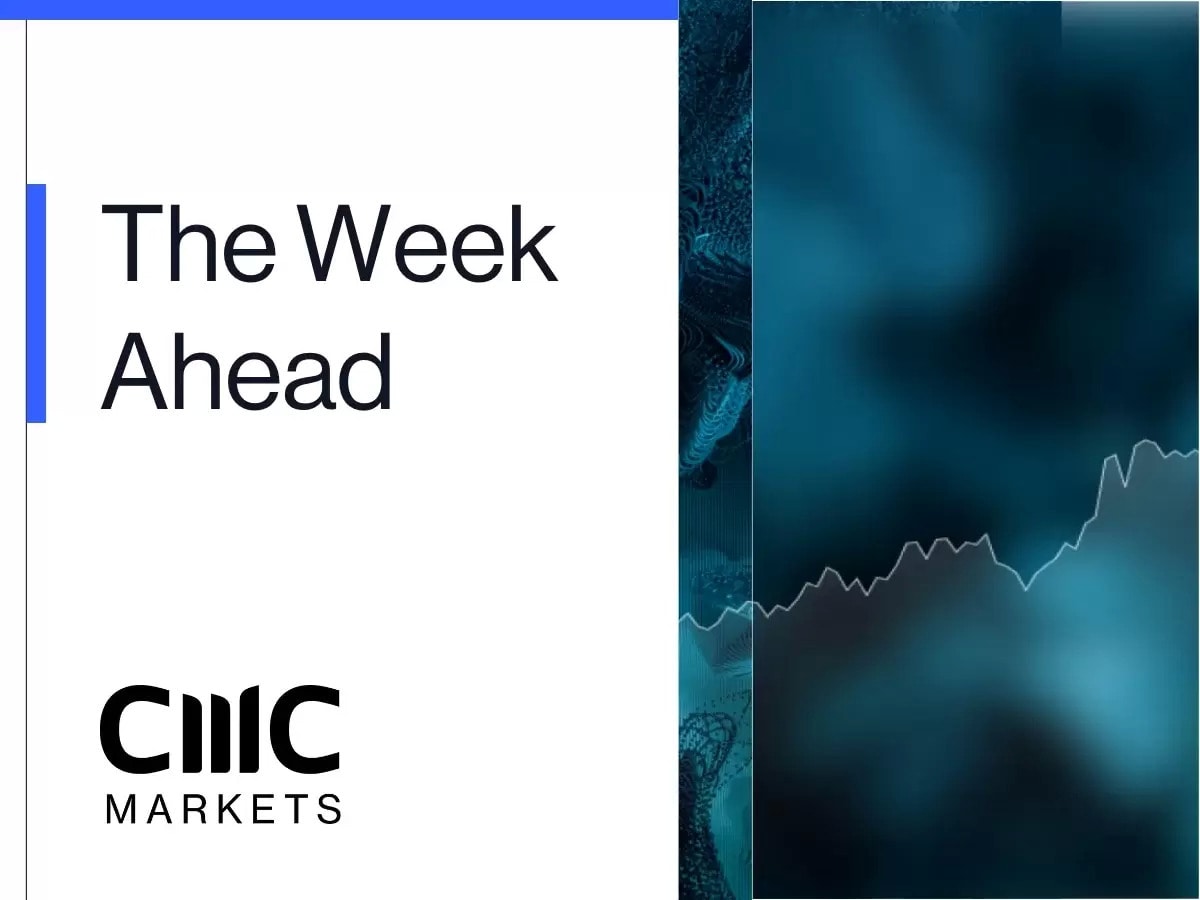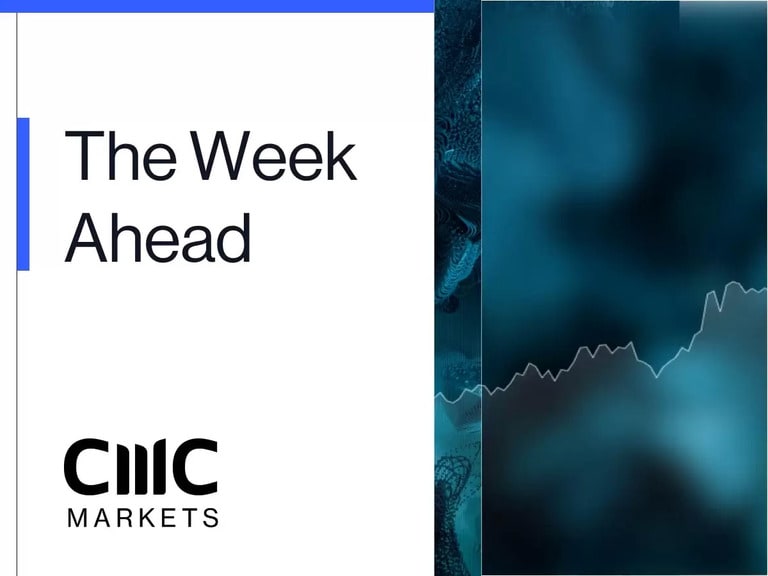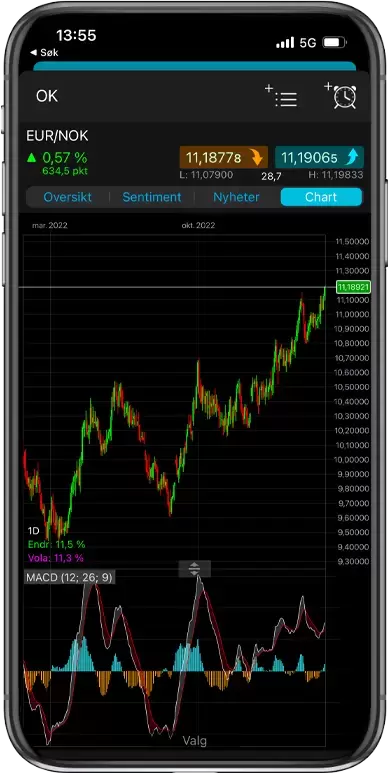Welcome to Michael Kramer’s pick of the key market events to look out for in the week beginning Monday 7 July.
Notable scheduled economic events in the coming week include the release of the UK’s gross domestic product (GDP) data for May, and the minutes from the US Federal Reserve’s 17-18 June rate-setting meeting, both of which we explore below. But we start with a preview of US president Donald Trump’s trade deadline next Wednesday.
US trade deadline
Wednesday 9 July
The EU is locked in talks with the US, striving to achieve an agreement in principle on tariffs before Donald Trump’s self-imposed deadline on Wednesday. The UK and Vietnam have already reached agreements with the US to set ‘reciprocal’ tariffs at 10% and 20%, respectively. Trump first announced the so-called reciprocal tariffs on US trading partners on 2 April, a date he dubbed Liberation Day. The on-off tariffs were delayed for 90 days to allow for negotiations, with 9 July marking the end of the pause. If the EU and the US fail to reach an agreement by Wednesday, Trump has threatened to impose tariffs of 50% on imports from Europe.
The market did not welcome the tariffs when they were announced in April, but equity and bond markets recovered after Trump put the levies on hold. Benchmark US index the S&P 500 and the tech-heavy Nasdaq posted record highs on 3 July. The question now is where US tariff rates will end up after Wednesday’s deadline, and whether the market will retain its optimism.
One segment of the market not to share in the optimism is the currency market. The US dollar has been the biggest loser of Trump’s trade war so far. The dollar index – which measures the currency’s strength against a basket of six others, including the pound, euro and yen – is down more than 6% since early April, and has not yet begun to recover.
The euro has been a beneficiary of dollar weakness. The EUR/USD pair has rallied more than 8% since early April, and is showing little sign of slowing. The pair continues to trade above its 10-day exponential moving average (EMA) and remains in an uptrend. As long as EUR/USD maintains this trend and holds above support at $1.1650, it might continue to rise, possibly towards resistance at $1.19.
EUR/USD, January 2021 - present
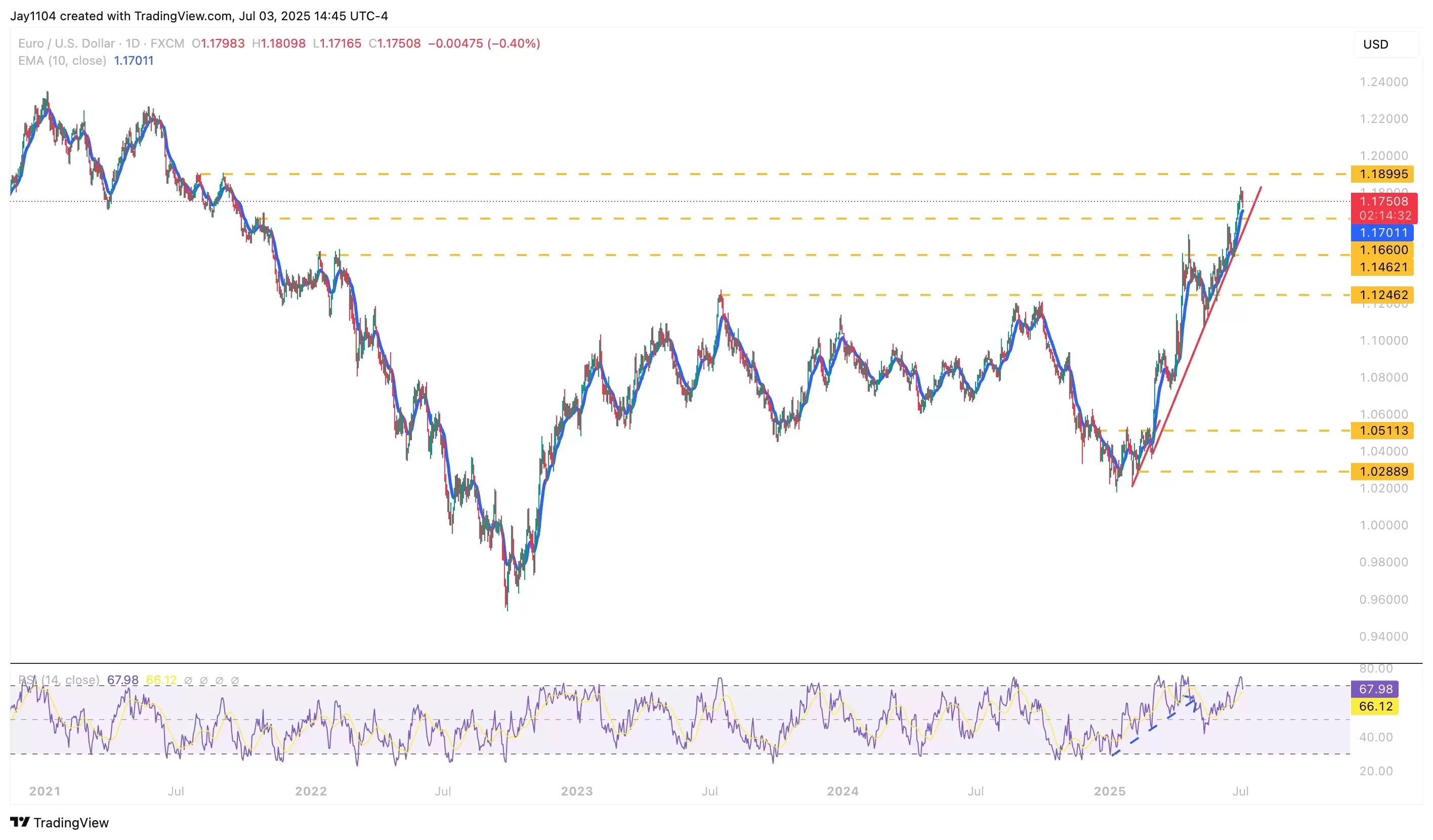
US Federal Reserve minutes
Wednesday 9 July
After the Fed held interest rates steady at its June meeting, the publication of the minutes should offer market participants clearer insights into the Fed’s thinking. Investors will be keen to understand the Fed’s expectation that inflation will accelerate in the second half of the year, with a potentially negative impact on growth – especially since a buoyant US equity market appears to have other ideas.
Although the minutes are unlikely to reshape the stock market outlook, they could impact gold prices if the dollar continues to weaken amid concerns about stagflation. Gold has been confined to a broad trading range since mid-April, propped up by support at $3,100 per troy ounce but unable to break above resistance at $3,400. More importantly, gold has formed a triple-top pattern, as highlighted on the chart below. The tops show three unsuccessful attempts to surpass $3,400. Additionally, momentum has weakened – the relative strength index (RSI) has broken below an uptrend and is now falling.
However, if the Fed’s commentary reveals that policymakers’ concerns about inflation run deeper than the Summary of Economic Projections (also known as the ‘dot plot’) might indicate, a flight to safety could drive gold back up towards the $3,400 level.
Gold, September 2024 - present
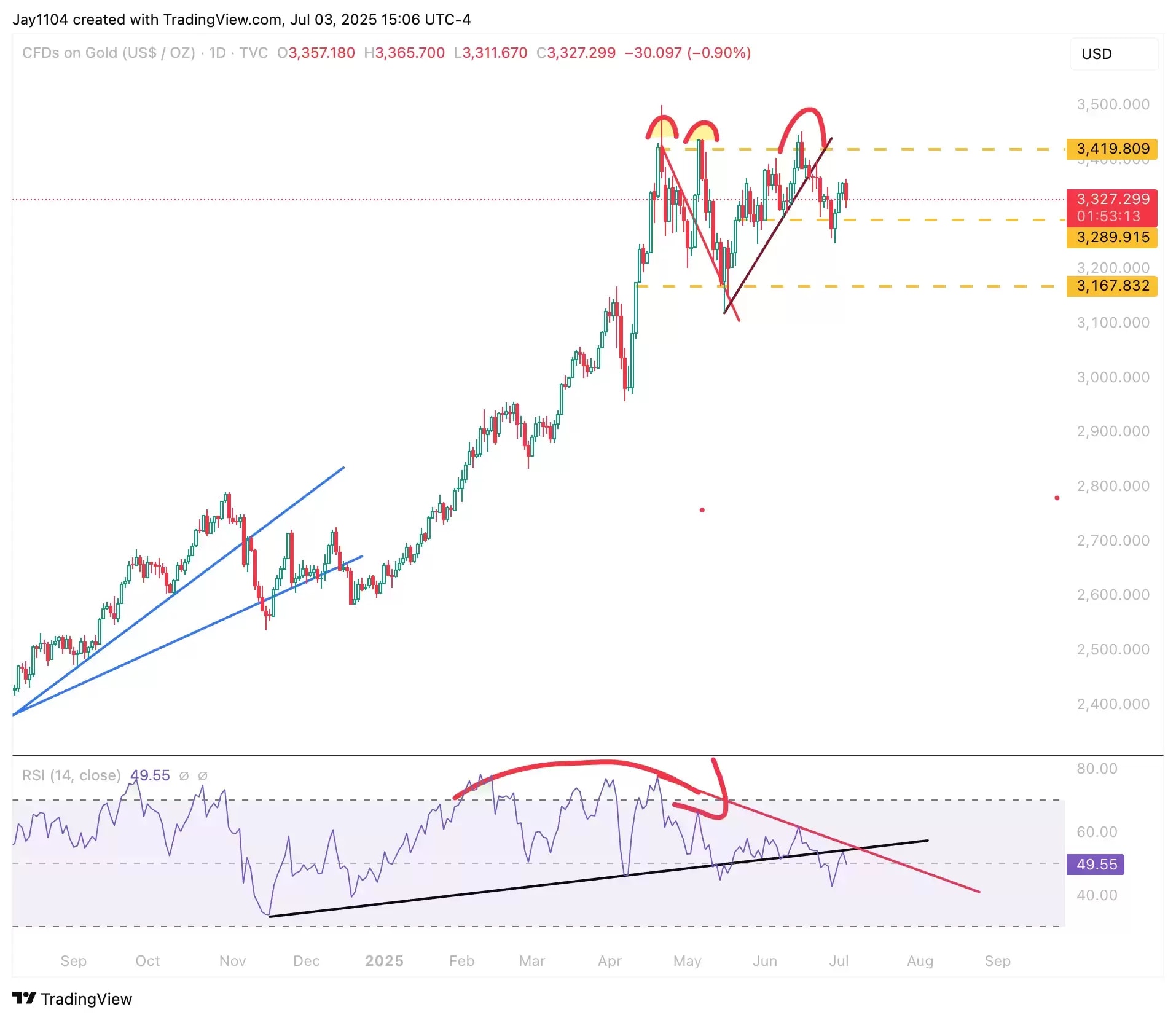
UK May GDP
Friday 11 July
The UK's economic growth has been relatively weak, hovering around 1% year-on-year since April 2024. Despite this, the pound has strengthened against the US dollar. As long as there are no big surprises (or tears in parliament), the uptrend seems likely to continue. Given that the UK is one of only two countries (alongside Vietnam) to have agreed a trade deal with the US, the market has one less risk to worry about.
Despite a slight wobble over the past week after Britain’s Labour government passed a watered-down welfare bill, the pound remains in an uptrend. Support is at the 10-day EMA near $1.3640. Provided that this level holds, GBP/USD could climb towards $1.3920 in the near term. Nevertheless, a reversal remains a possibility. The RSI, a key momentum indicator, has begun to move lower, signalling that a shift in the prevailing trend may be approaching.
GBP/USD, July 2021 - present
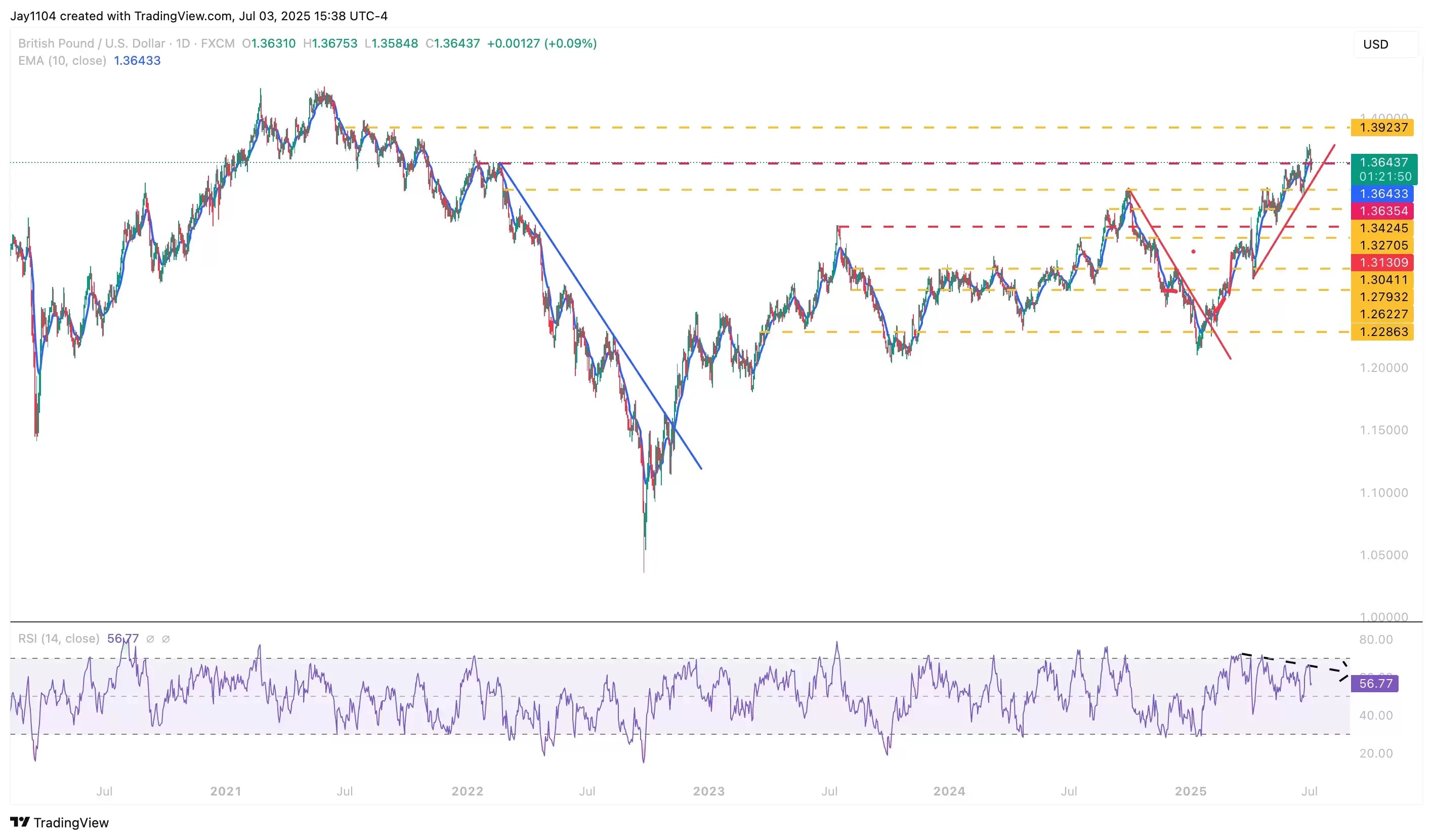
Economic and company events calendar
Major upcoming economic announcements and scheduled US and UK company reports include:
Monday 7 July
• Eurozone: May retail sales
• Germany: May industrial production
• UK: June like-for like retail sales
• Results: No major scheduled earnings announcements
Tuesday 8 July
• Australia: Reserve Bank of Australia interest rate decision
• Germany: May trade balance
• Results: No major scheduled earnings announcements
Wednesday 9 July
• China: June consumer price index (CPI)
• New Zealand: Reserve Bank of New Zealand interest rate decision
• US: Tariff deadline, Federal Open Market Committee (FOMC) minutes
• Results: Jet2 (FY), Zigup (FY)
Thursday 10 July
• New Zealand: June business purchasing managers’ index (PMI)
• US: Weekly initial jobless claims
• Results: Conagra Brands (Q4), Delta Air Lines (Q2), Levi Strauss & Co. (Q2)
Friday 11 July
• Canada: June unemployment rate
• France: June CPI
• Germany: June harmonised CPI
• UK: May gross domestic product (GDP)
• US: June monthly budget statement
• Results: No major scheduled earnings announcements
Note: While we check all dates carefully to ensure that they are correct at the time of writing, the above announcements are subject to change.
CMC Markets er en ‘execution-only service’ leverandør. Dette materialet (uansett om det uttaler seg om meninger eller ikke) er kun til generell informasjon, og tar ikke hensyn til dine personlige forhold eller mål. Ingenting i dette materialet er (eller bør anses å være) økonomiske, investeringer eller andre råd som avhengighet bør plasseres på. Ingen mening gitt i materialet utgjør en anbefaling fra CMC Markets eller forfatteren om at en bestemt investering, sikkerhet, transaksjon eller investeringsstrategi. Denne informasjonen er ikke utarbeidet i samsvar med regelverket for investeringsanalyser. Selv om vi ikke uttrykkelig er forhindret fra å opptre før vi har gitt dette innholdet, prøver vi ikke å dra nytte av det før det blir formidlet.
